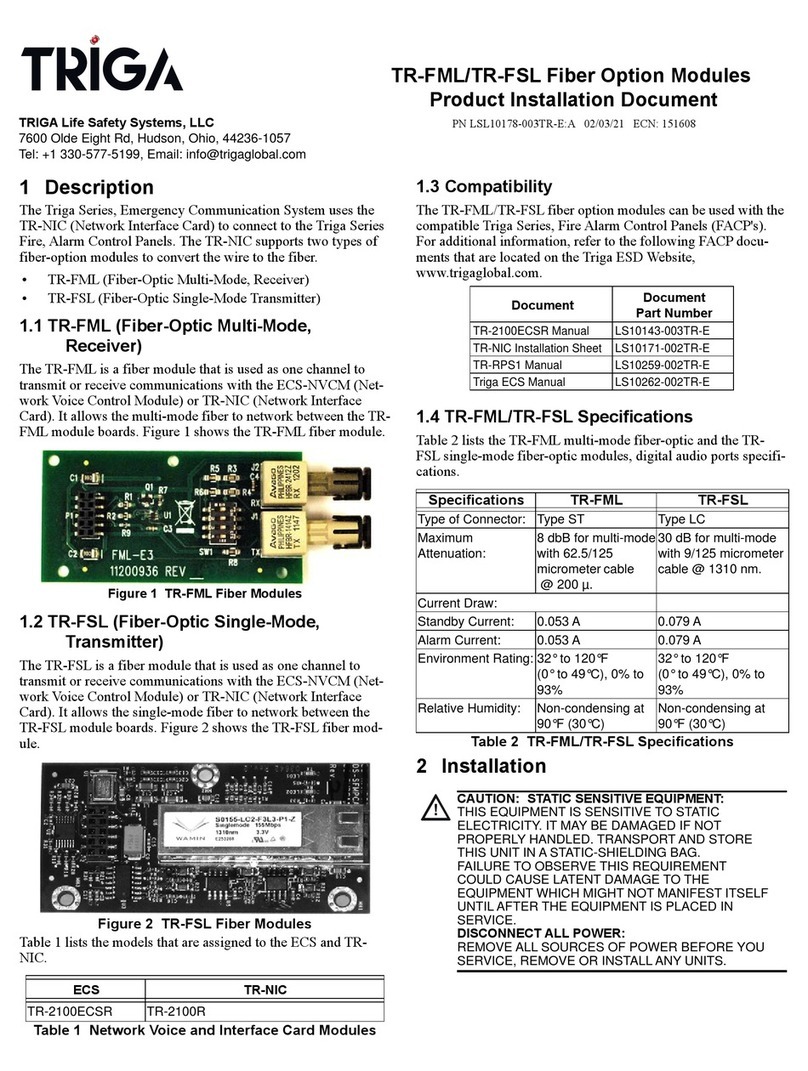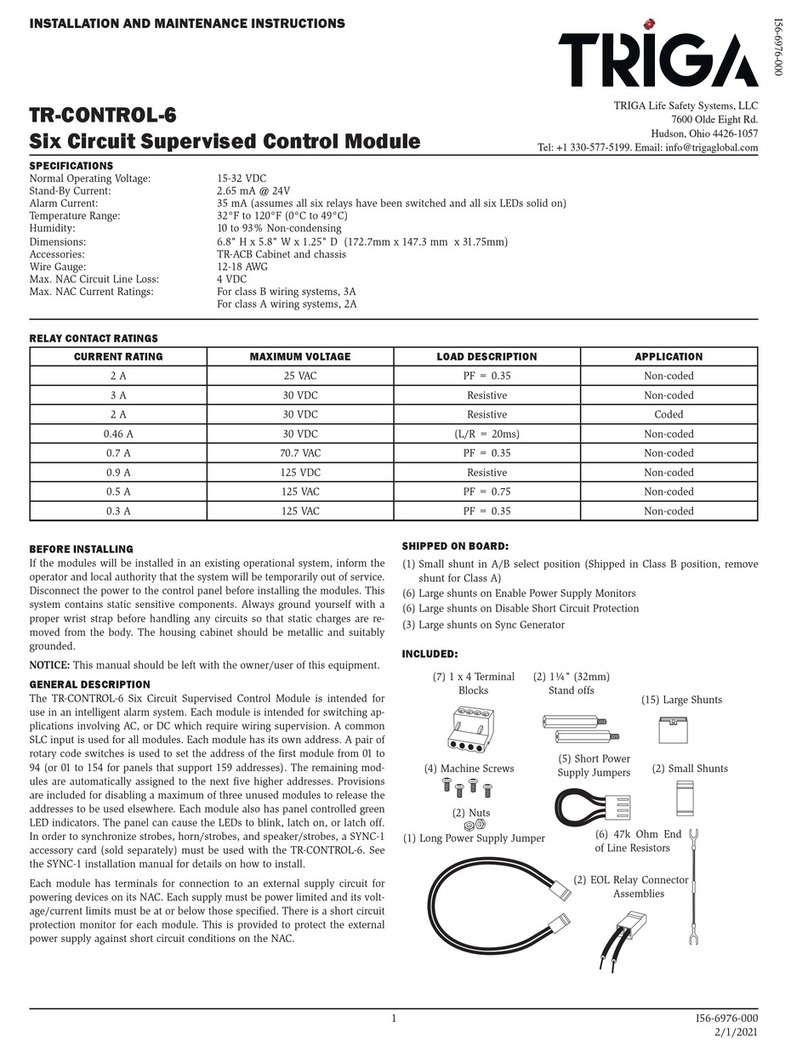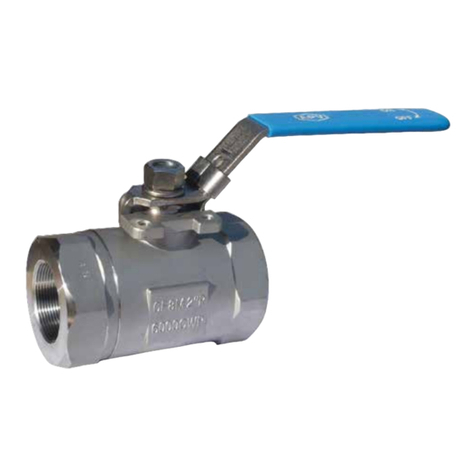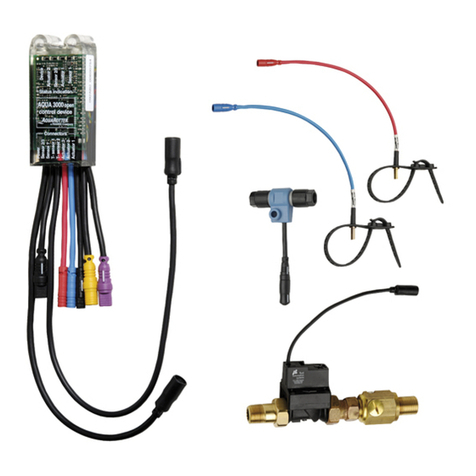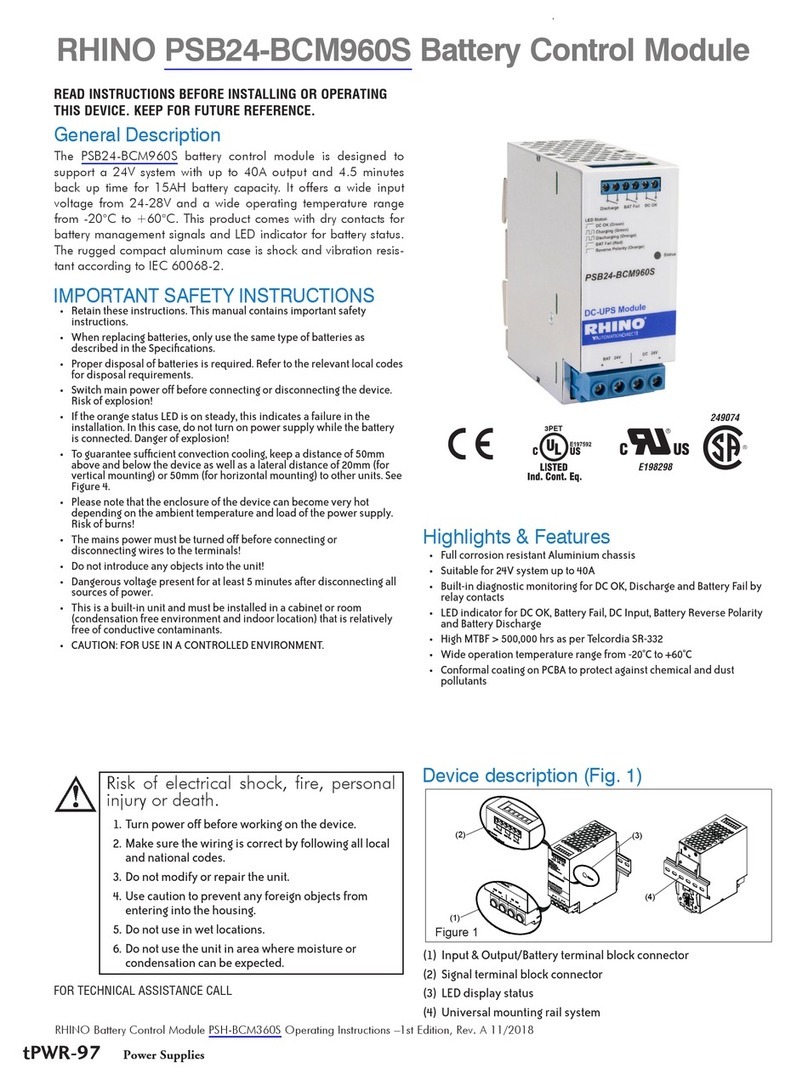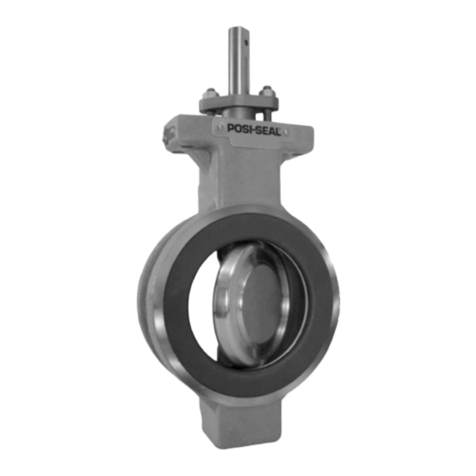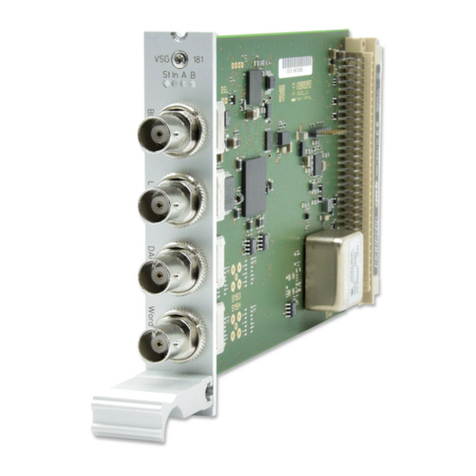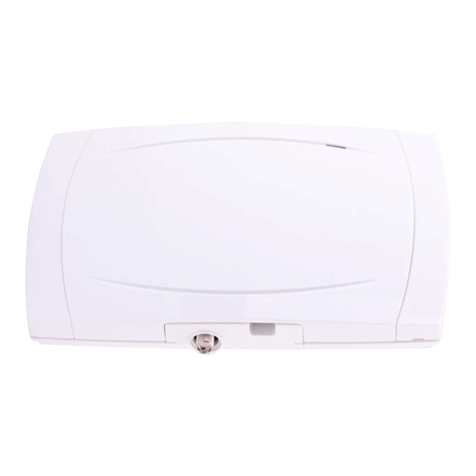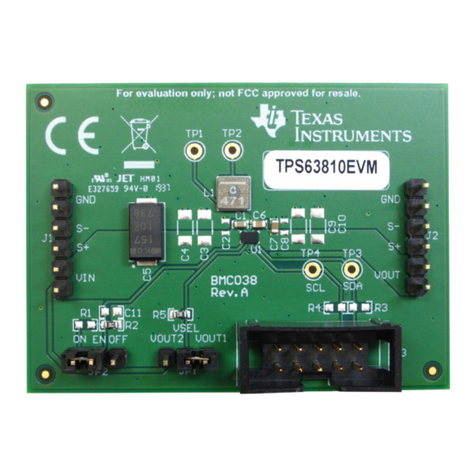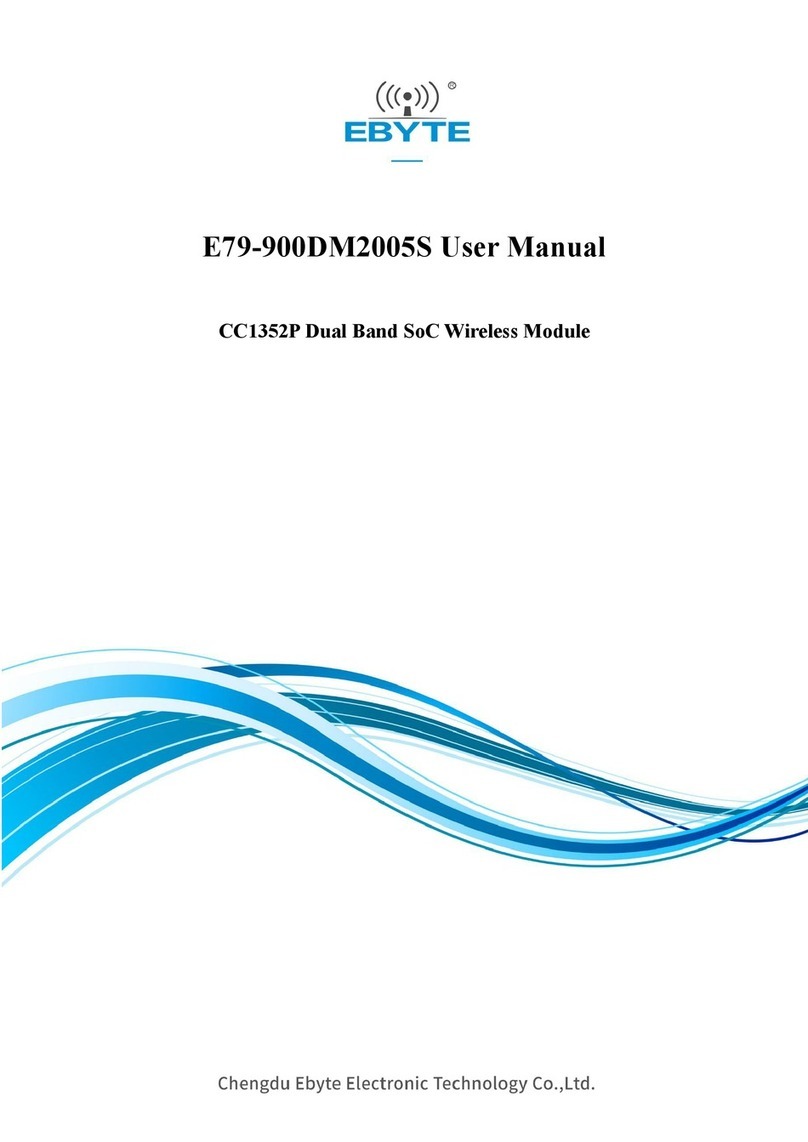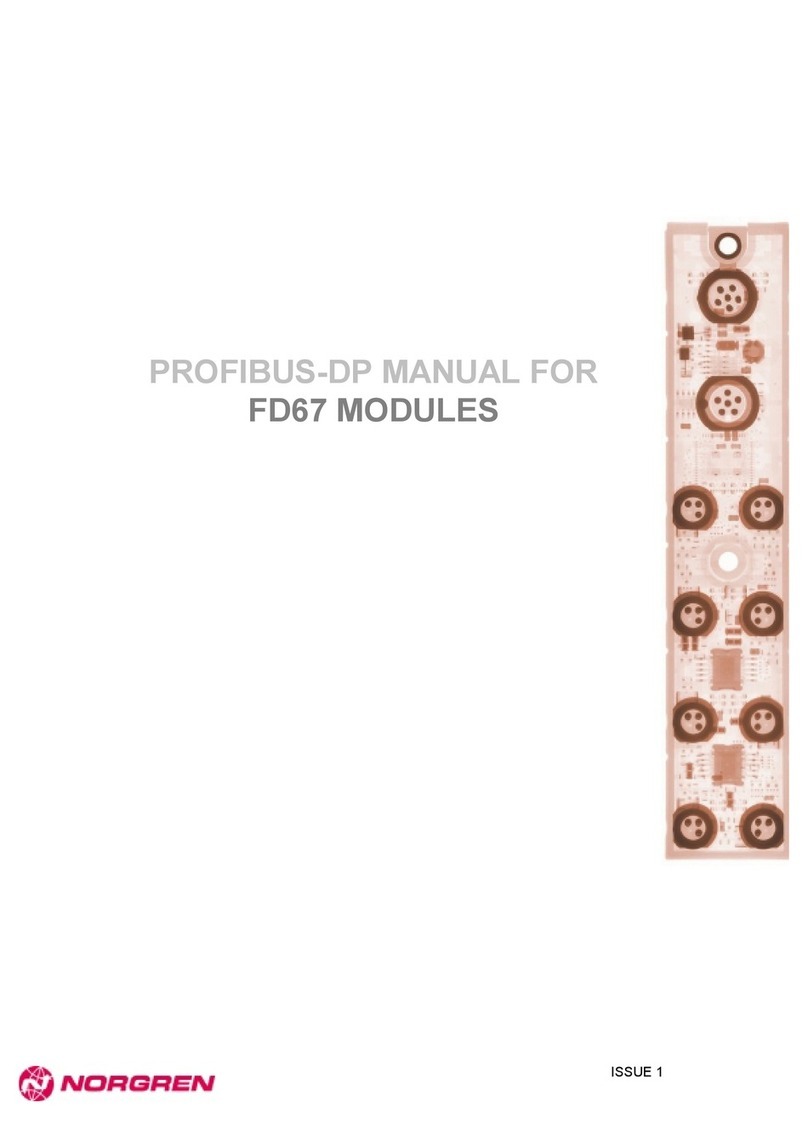TRIGA TR-RELAY-6 User manual

BEFORE INSTALLING
If the modules will be installed in an existing operational system, inform the
operator and local authority that the system will be temporarily out of service.
Disconnect the power to the control panel before installing the modules. This
system contains static sensitive components. Always ground yourself with
a proper wrist strap before handling any circuits so that static charges are
removed from the body. The housing cabinet should be metallic and suitably
grounded.
NOTICE: This manual should be left with the owner/user of this equipment.
GENERAL DESCRIPTION
The TR-RELAY-6 Six Relay Control Module is intended for use in an intelligent
alarm system. Each module is intended for Form-C switching applications,
which do not require wiring supervision for the load circuit. A single isolated
set of dry relay contacts is provided for each module, which is capable of
being wired for either normally open or normally closed for each operation.
Each module has its own address. A pair of rotary code switches is used to set
the address of the first module from 01 to 94 (or 01 to 154 for panels that sup-
port 159 addresses). The remaining modules are automatically assigned to the
next five higher addresses. Provisions are included for disabling a maximum
of three unused modules to release the addresses to be used elsewhere. Each
TR-RELAY-6 module also has panel controlled green LED indicators. The panel
can cause the LEDs to blink, latch on, or latch off.
CONTENTS INCLUDE:.
(6) 1 × 3 Terminal Blocks
(1) 1 × 4 Terminal Blocks
(2) 1¼" (32mm) Stand offs
(4) Machine Screws
(2) Nuts
(1) Shunt (NOTE: For the disable position, not more than one shunt shall be
installed at the same time)
COMPATIBILITY REQUIREMENTS
To ensure proper operation, this module shall be connected to a compatible
Triga series system control panel.
WARNING
All relay switch contacts are shipped in the standby state (open) state, but may have transferred to the activated (closed) state during shipping. To ensure that
the switch contacts are in their correct state, modules must be made to communicate with the panel before connecting circuits controlled by the module.
RELAY CONTACT RATINGS
CURRENT RATING MAXIMUM VOLTAGE LOAD DESCRIPTION APPLICATION
2 A 25 VAC PF = 0.35 Non-coded
3 A 30 VDC Resistive Non-coded
2 A 30 VDC Resistive Coded
0.46 A 30 VDC (L/R = 20ms) Non-coded
0.7 A 70.7 VAC PF = 0.35 Non-coded
0.9 A 125 VDC Resistive Non-coded
0.5 A 125 VAC PF = 0.75 Non-coded
0.3 A 125 VAC PF = 0.35 Non-coded
I56-6983-000
INSTALLATION AND MAINTENANCE INSTRUCTIONS
SPECIFICATIONS
Normal Operating Voltage: 15-32 VDC Stand-By Current:1.90 mA @ 24V
Alarm Current: 32 mA (assumes all six relays have been switched once and all six LEDs solid on)
Temperature Range: 32°F to 120°F (0°C to 49°C)
Humidity: 10 to 93% Non-condensing
Dimensions: 6.8" H × 5.8" W × 1.0" D (17.3 cm x 14.7 cm x 2.5 cm)
Accessories: TR-ACB cabinet and chassis
Wire Gauge: 12-18 AWG
Relay Current: 30 mA/Relay Pulse (15.6 mS pulse duration) pulse under panel control
TR-RELAY-6
Six Relay Control Module
TRIGA Life Safety Systems, LLC
7600 Olde Eight Rd.
Hudson, Ohio 4426-1057
1 I56-6983-000
2/1/2021

COMPONENTS
The following is a description of the TR-RELAY-6 mounting framework:
• One or two TR-RELAY-6 modules can be installed in a TR-ACB cabinet
The TR-ACB cabinet has a built-in chassis that will accommodate one or two
TR-RELAY-6 modules.
FIGURE 1. TR-ACB CABINET
0
1
2
3
4
56789
0
78
6
5
4
3
21
910
11
12
13
14
15
BASE ADDRESS
ADDRESS
DISABLE
NONE
ONE
TWO
THREE
0
1
2
3
4
56789
0
78
6
5
4
3
21
9
BASE ADDRESS
ADDRESS
DISABLE
NONE
ONE
TWO
THREE
10
11
12
13
14
15
BACKBOX
MOUNTING
HOLES
FIGURE 2. TYPICAL MOUNTING HOLE LOCATIONS
The front TR-RELAY-6 module positions of each chassis are offset below the
rear TR-RELAY-6 module positions so that all of the status indicators are vis-
ible. For cabinet dimensions refer to TR-ACB instruction manual.
INSTALLATION STEPS
1. Cabinet Mounting
In a clean, dry area, mount the backbox using the four holes provided in
the back surface of the cabinet.
C0234-05
2. Module Installation
There are two methods for installing a module in the rear position of a
chassis. Method one is for installation of a rear module only, when no
module will be installed in front of it. Refer to Figure 3 for instructions.
Method two is for installation of a rear module when another module
will be installed in the chassis position in front of it. Refer to Figures 4a
and 4b for method two. All necessary screws and standoffs are supplied
with the modules.
C0235-00
2
1
3
C0249-00
FIGURE 3. INSTALLATION OF REAR MODULE ONLY, METHOD ONE
Step 1: Insert the bottom of the TR-RELAY-6 module down into a rear slot on
the chassis.
Step 2: Carefully swing the upper edge of the board back towards the back of
the chassis until it touches the two standoffs.
Step 3: Align two 4-40 screws with the two standoffs and tighten.
Step 4: Address and wire the modules according to the instructions in this
manual.
The steps in Figures 4a and 4b describe and illustrate module installation
when the rear chassis position and the position in front of it will be filled.
Front position installation is possible only if the rear position is filled with a
module.
1
C0244-00
FIGURE 4A. INSTALLATION OF TR-RELAY-6 MODULE IN A REAR
CHASSIS POSITION, METHOD TWO
Step 1: Insert the bottom edge of the TR-RELAY-6 module down into a rear
slot of the chassis.
Step 2: Carefully swing the bottom edge of the board towards the back of the
board until it touches the short standoff attached to the chassis.
Step 3: Align the long standoff with the short standoff and tighten.
2
1
3
C0245-00
FIGURE 4B. INSTALLATION OF TR-RELAY-6 MODULE IN FRONT CHASSIS
POSITION
Step 1: Insert the bottom edge of the TR-RELAY-6 module down into a front
slot of the chassis.
Step 2: Carefully swing the upper edge of the board towards the back of the
chassis until it touchesthe 1¼" (31.75mm) standoffs installed on the
rear module.
Step 3: Align two 4-40 screws with the two standoffs and tighten.
Step 4: Address and wire the modules according to the instructions in this
manual.
2 I56-6983-000
2/1/2021

WIRING
NOTE: All wiring must conform to applicable local codes, ordinances, and
regulations.
1. Install module wiring in accordance with the job drawings and appropri-
ate wiring diagrams.
2. Make electrical connections by stripping approximately ¼" (6.4 mm) of
insulation from the end of the wire sliding the bare end of the wire under
the clamping plate, and tightening the clamping plate screw.
3. Set the address on the modules per the job drawing. Use the rotary code
switches to set the address of the first module between 01 and 94 (or 01
and 154 for panels that support 159 addresses). The remaining modules
are automatically assigned to the next five higher addresses. For exam-
ple, if the base address switch is set to 28, the next five modules will be
addressed to 29, 30, 31, 32, and 33. DO NOT set the lowest address above
94(or 154 for panels that support 159 addresses), as the other modules
will be assigned to nonexistent addresses.
4. A shunt is provided to disable a maximum of three unused modules.
Modules are disabled from the highest address and work downward. If
two modules are disabled, the lowest four addresses will be functional,
while the highest two will be disabled. For example, if the shunt for
Address Disable is placed on “two” and the base address switch is set to
28, the modules will be assigned to 28, 29, 30 and 31.
NOTE: All references to power limited represent “Power Limited (Class 2)”.
NOTE: The TR-RELAY-6 must have power cycled for shunt changes to take effect.
0
1
2
3
456789
0
78
6
5
4
3
21
9
10
11
12
13
14
15
N.C.
N.O.
COMMON
ADDRESS 5
N.C.
N.O.
COMMON
ADDRESS 4
N.C.
N.O.
COMMON
ADDRESS 3
N.C.
N.O.
COMMON
ADDRESS 2
N.C.
N.O.
COMMON
ADDRESS 1
N.C.
N.O.
COMMON
ADDRESS 0
SLC
BASE ADDRESS
ADDRESS
DISABLE
NONE
ONE
TWO
THREE
6.8"
5.8"
FROM PANEL
OR PREVIOUS DEVICE
SIGNAL LINE CIRCUIT (SLC)
32 VDC MAX.
SEE PANEL INSTRUCTION
MANUAL FOR
WIRE REQUIREMENTS
TO NEXT
DEVICE
–+
–
+
–
+
NC
NO
COMMON
RELAY CONNECTIONS
STATUS
INDICATORS
C0250-04
FIGURE 5. WIRING AND PROGRAMMING THE TR-RELAY-6 MODULE
NOTE: Power must not be applied to the unit when changing functionality of
the shunts
NOTES:
• The relay contacts on the TR-RELAY-6 may be connected to either a
power-limited or non power-limited source, this wiring must remain
separated by at least ¼" (6.4 mm) from all power-limited wiring.
• Power-limited circuits must employ type FPL, FPLR, or FPLP cable as
required by Article 760 of the NEC.
• For easier wiring, assign all power-limited wiring to one side rather than
alternating with non power-limited.
PROGRAMMING
The modules are programmed as modules in each system according to the
programming instructions in the appropriate FACP manual.
FCC STATEMENT
This device complies with part 15 of the FCC Rules. Operation is subject to the following two conditions: (1) This device may not cause harmful interference, and (2) this
device must accept any interference received, including interference that may cause undesired operation.
NOTE: This equipment has been tested and found to comply with the limits for a Class B digital device, pursuant to Part 15 of the FCC Rules. These limits are designed
to provide reasonable protection against harmful interference in a residential installation. This equipment generates, uses and can radiate radio frequency energy and, if not
installed and used in accordance with the instructions, may cause harmful interference to radio communications. However, there is no guarantee that interference will not
occur in a particular installation. If this equipment does cause harmful interference to radio or television reception, which can be determined by turning the equipment off
and on, the user is encouraged to try to correct the interference by one or more of the following measures:
– Reorient or relocate the receiving antenna.
– Increase the separation between the equipment and receiver.
– Connect the equipment into an outlet on a circuit different from that to which the receiver is connected.
– Consult the dealer or an experienced radio/TV technician for help.
DEVICE AND SYSTEM SECURITY
Before installing this product ensure that the tamper
seal on the packaging is present and unbroken and
the product has not been tampered with since leaving
the factory. Do not install this product if there are
any indications of tampering. If there are any signs
of tampering the product should be returned to the
point of purchase.
It is the responsibility of the system owner to ensure
that all system components, i.e. devices, panels, wir-
ing etc., are adequately protected to avoid tampering
of the system that could result in information disclo-
sure, spoofing, and integrity violation.
3 I56-6983-000
©2021. 2/1/2021
Triga™ is a trademark of TRIGA Life Safety Systems, LLC.
Other TRIGA Control Unit manuals
Popular Control Unit manuals by other brands
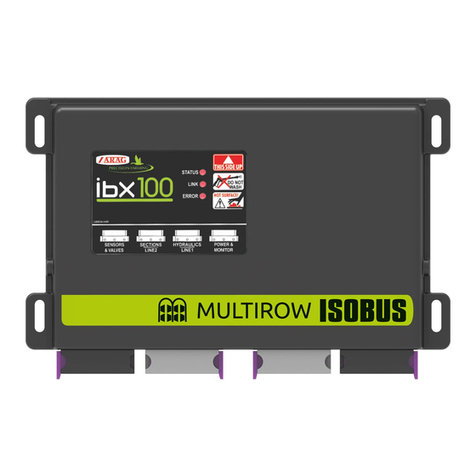
ARAG
ARAG IBX100 4679004 Installation, use and maintenance
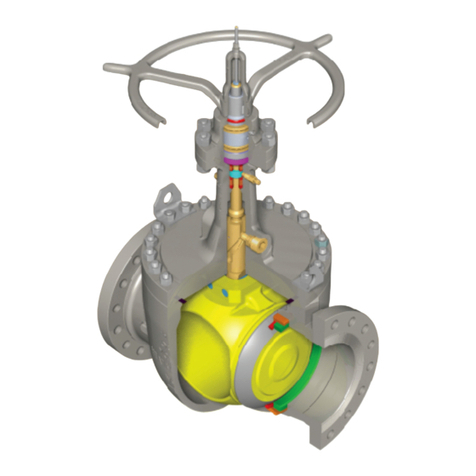
Cameron
Cameron ORBIT GP-6 Installation operation & maintenance
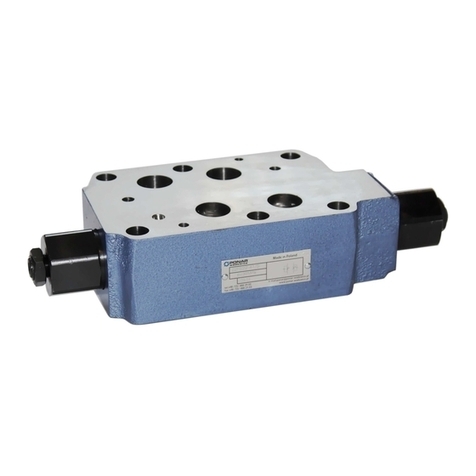
Ponar Wadowice
Ponar Wadowice Z2FS22 Series Operation manual
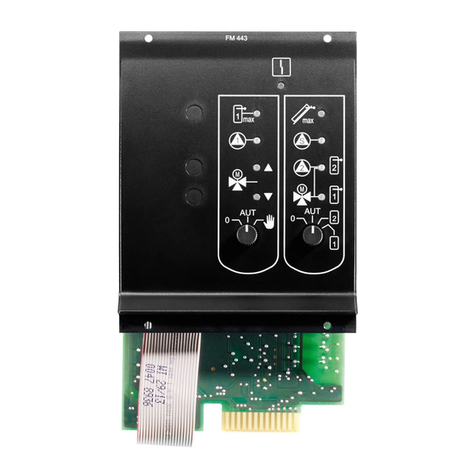
Buderus
Buderus FM443 operating instructions

Candy Light
Candy Light SLIDE user guide

LOVATO ELECTRIC
LOVATO ELECTRIC EXP10 05 quick start guide
